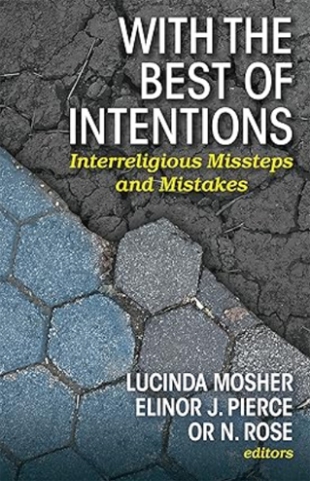Some books are written about interreligious understanding that come across sounding too sweet or simple, as if we everything boils down to each religion’s attempt to live by the Golden Rule. It’s not that simple.
People of different religious traditions sometimes cannot marry, in fact, they may not even be allowed to shake hands in public. There are courtesies and customs to be learned, and learned from.
Each religious tradition has its own ways of doing things — theologically, liturgically, in worship, in study, in service. There are similarities, but there are also differences. It is usually a mistake to assume too much. This book is devoted to experts telling stories of their own mistakes and missteps, offering lessons for others to learn from.
Organized into five parts, the first offers mistakes made in initial encounters. Getting people’s names and salutations correct, for example. Remembering to ask questions (particularly in matters of food). Part II focuses on “Presumptions,” including a presumptuous mistake made in group prayer at an interfaith gathering. This chapter would be a good starting point for any reader who uses this book to learn how to relate as a religious leader to people of other religious traditions: avoid group rituals, such as prayer. As the author calls his chapter, “The Power of Prayer (to Make Things Awkward).”
Part III focuses not on group situations, but on one-on-one missteps, including both interfaith and intrafaith (differing practices within a single religion) arguments that the authors now regret.
Part IV offers seven examples of interreligious divides and how to navigate them. Don’t miss Eboo Patel’s essay in this section on why it’s important to understand how each religion approaches matters of justice. Don’t miss also Preeta Banerjee’s chapter with examples of why and how to avoid appropriating another tradition’s practices. This is what happens when we take something for your own use. (See the excerpt accompanying this review.)
And Part V is devoted to structural oppression, the complexities of Israel/Palestine (“Tales from the Interreligious Dialogical Mine Field”) among them. Each of its eight essays — written by authors who include chaplains, a Black clinical pastoral education supervisor, and an Asian American Buddhist, is so meaty it might be considered an abbreviated PhD dissertation.
